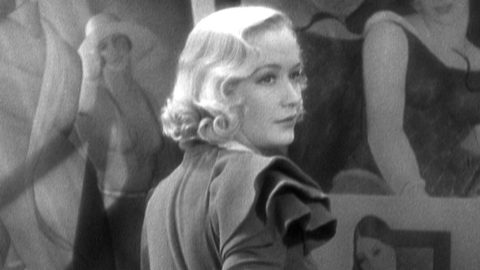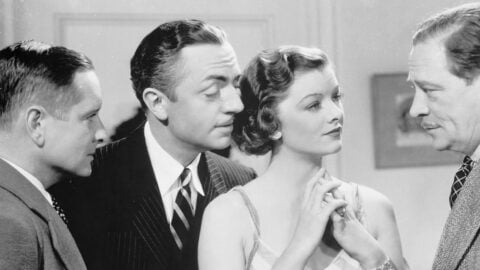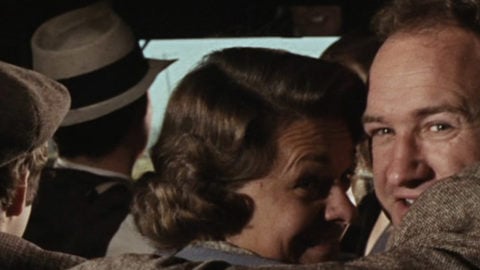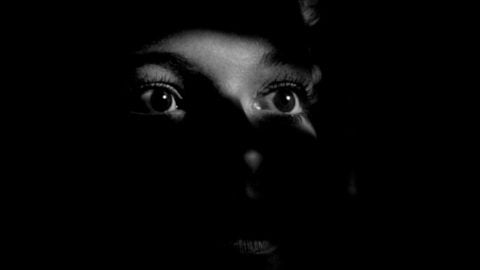TCM Diary: The Night Digger & Alice, Sweet Alice
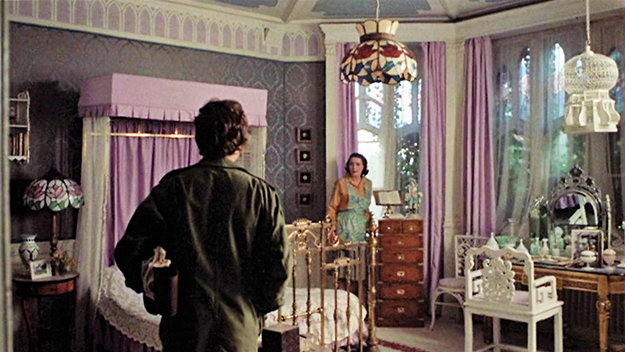
The Night Digger
Genre stories have always been powerful ways to express humanity’s primal terror of the unknown, the watchful presences beyond the campfire. What happens when the rational confronts the irrational? Two very different films from the 1970s—The Night Digger (1971) and Alice, Sweet Alice (1976)—present hysteria-tinged and strangely personal stories that truck in the irrational, the superstitions and beliefs that hold us captive or hold us in thrall. Both films have hearty cult followings, but they deserve to be better known.
The Night Digger, directed by Alastair Reid, was based on Joy Cowley’s novel Nest in a Falling Tree, and adapted for the screen by Roald Dahl, who had already done a couple of screen adaptations of novels by Ian Fleming (the James Bond film You Only Live Twice, and Chitty Chitty Bang Bang). Dahl chose Nest in a Falling Tree as a vehicle for his famous wife, Patricia Neal, whose career had been derailed by a stroke in 1965.
Neal had won the Best Actress Academy Award in 1963 for her performance in Hud, but had already been a star for 20 years at that point. Married in 1953, Dahl and Neal had five children and went through many harrowing hardships (one child died at 7, another was brain-damaged at 4 months old). Harder times were still to come with the series of debilitating strokes suffered by Neal. As she wrote in her memoir As I Am, “The third was the one that did me in.” She had to learn how to walk and talk all over again. Dahl was aggressive on behalf of his wife’s career and Nest in a Falling Tree, about a middle-aged woman who was also a stroke survivor, seemed just the thing.
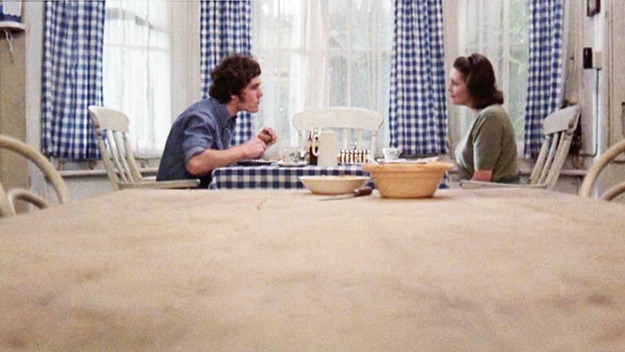
The Night Digger
The Night Digger is the story of a Now, Voyager-style mother-daughter relationship, operating with a twisted dynamic of powerlessness and control. Maura (Neal) spends the majority of time at home taking care of her invalid mother (Edith Prince), who may very well be playing up her helplessness in order to keep her adult daughter trapped. Meanwhile, the surrounding community is terrorized by a sexually sadistic serial killer on the loose. When Billy (Nicholas Clay), a handsome drifter on a motorcycle, shows up at the house one day looking for work, Maura wants to send him packing but her mother takes him on. Billy has a chilly blankness to him: at times he is affably chatty, at other times off-puttingly arrogant. Maura develops a girlish crush on this much younger stranger.
The psychological hothouse of The Night Digger is filmed beautifully by cinematographer Alex Thomson, who uses unnerving horizontal pans almost fetishistically, showing the cluttered and faded grandeur of the interior in passing, its broken statues, its stuffed owls. The camera angles are pure Hitchcock with a shot of Polanski: every exaggerated shot is chosen to intensify the sense of overall uneasiness. There is a terrific Marnie-esque close-up of Maura’s fingers twisting up the straps of her green alligator-skin purse as she endures Billy’s half-clothed nearness. The town seethes with gossip about sex-change operations and Maura’s inappropriate romance. One thing is abundantly clear: nobody has enough sex in this town and therefore, everyone is obsessed with it. The score by the legendary Bernard Herrmann completes the mood of violent sexual hysteria.
The shoot was a terrible experience for Neal, who shared a painful memory in her memoir: “I also remember distinctly, on more than one occasion, hearing [the other cast members] make fun of me. Brain-damaged people can sense when someone is mocking them. We grow antennae.” Her performance is remarkable, even more so considering what she was up against.
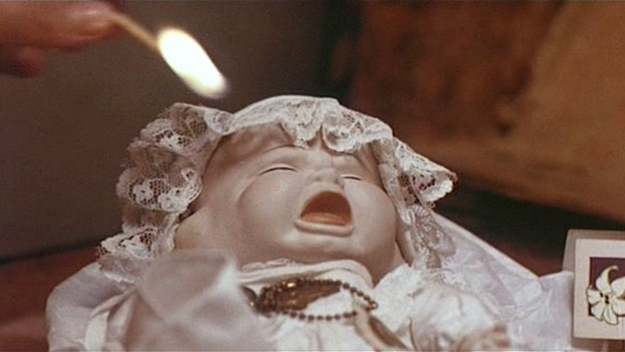
Alice, Sweet Alice
Directed by Alfred Sole, Alice, Sweet Alice is a mostly forgotten horror film in the “creepy child” subgenre, and a masterful evocation of hallucinatory Catholic faith, of the pre-Vatican II variety. Filmed on location in Sole’s hometown of Paterson, New Jersey, the movie makes the most of a place haunted by its bustling industrial past—the perfect backdrop for a horror film. (It would make a great double bill alongside Jim Jarmusch’s upcoming film, Paterson.)
Brooke Shields makes her (brief) debut in Alice, Sweet Alice, as Rachel, a child who is murdered during her first communion ceremony, her legs in their white tights seen between the pews as her body is dragged off into the rectory. The Spages family is already shattered before the death: Dad (Niles McMaster) has moved away and remarried, and Mom (Linda Miller) clearly favors little Rachel over older sister Alice (Paula E. Sheppard). Alice is a strange and angry little thing, and when her little sister is murdered, everyone—including her mother and her aunt (Jane Lowry)—believes Alice did it. After all, Rachel was murdered by a figure wearing a yellow rain slicker and a painted plastic mask, and doesn’t Alice like to dress up in those things too?
It’s not that difficult to buy that this angry neglected child would resort to murder. Alice spends a lot of time in the basement, sitting in front of a makeshift altar, complete with a mason jar full of cockroaches. On the cusp of adolescence, she must fight off repeated molestation attempts by the neighbor. (“I know what you have downstairs,” the obese, urine-stained man says to her at one point.) When Alice gets her period, she does not tell her mother—it’s all too evident that early on, Alice has realized she must look out for herself. Astonishingly, Sheppard was 19 years old when she played Alice, but you would swear on one of the many Bibles sprinkled throughout the film that she was 12 or 13. It’s an extraordinary performance.
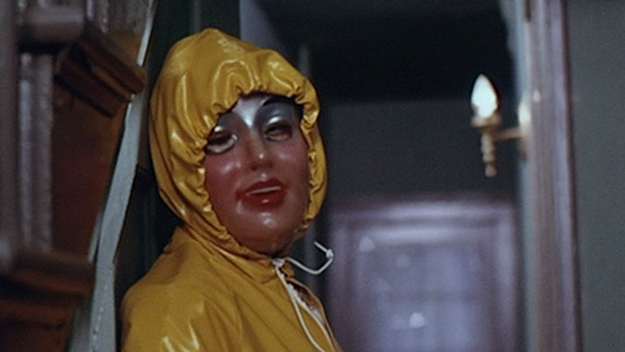
Alice, Sweet Alice
From one scene to the next, religious iconography overwhelms the screen: paintings of Mary and Christ, marble statues, crosses on every wall, religion leering at the characters from behind. Parishioners kneel at the altar, pushing out fat tongues for communion (Communion was the film’s original title), looking like a parade of aggressive Rolling Stones logos. Religion is not a refuge in Alice, Sweet Alice. It is a rejection of the body itself, but the body—its tongues, its teeth, its menstruation—will not be denied. The murderer in the yellow slicker flitting through the hallways (a callback to the red-hooded child in Don’t Look Now) is an avenging reminder of the primacy of the body.
Alice, Sweet Alice was highly praised on its initial release. Roger Ebert loved it. But it’s had a checkered past ever since, and Sole made only two more movies before transferring to television. The character of Alice lingers a long time after the film ends. Nobody wants to hear from angry little girls. Sole did. He knew they had a lot to be angry about.
Alice, Sweet Alice airs December 17 on Turner Classic Movies.
Sheila O’Malley is a regular film critic for Rogerebert.com and other outlets including The Criterion Collection. She wrote the narration (read by Angelina Jolie) for the Gena Rowlands tribute reel played at the 2016 Governors Awards. Her blog is The Sheila Variations.



